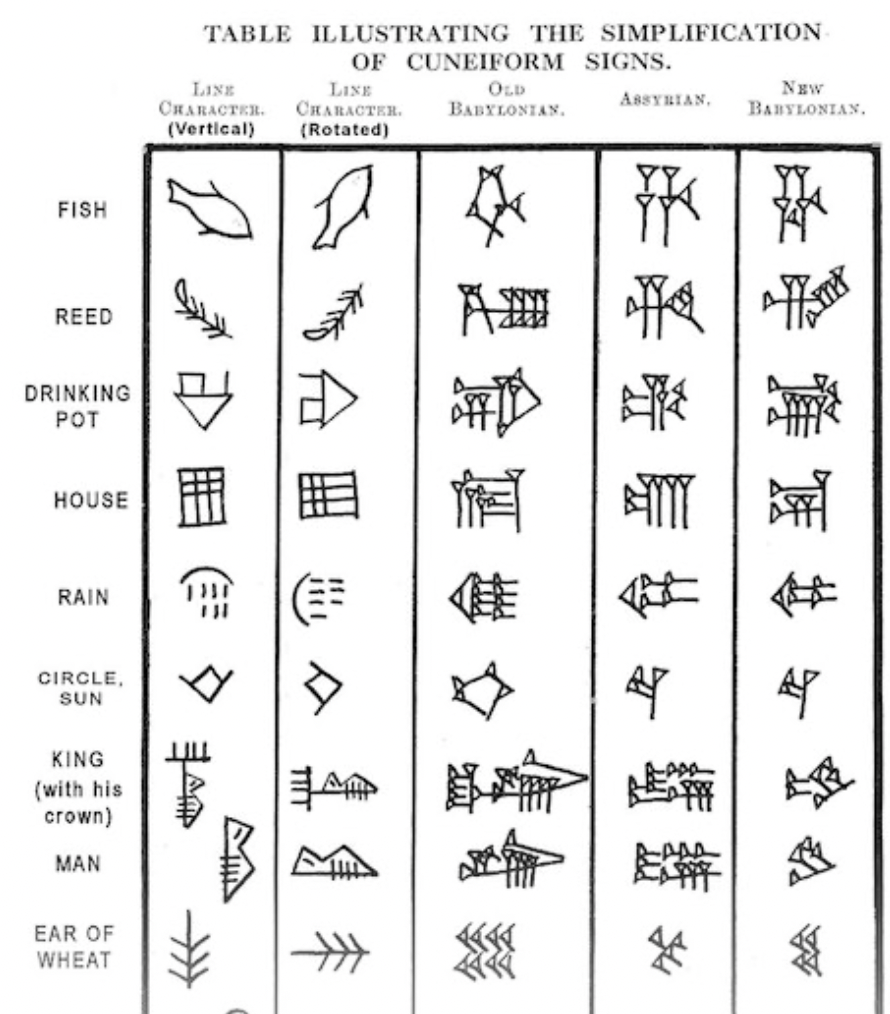Cuneiform writing was created in 3500 BCE by the Sumerians in ancient Mesopotamia and after some time it was adapted by many other cultures expanding its use to more than 15 different languages. This type of writing is considered the most important contribution the Sumerians made to the world although they made many. Cuneiform is not a language but one of the oldest writing systems in the world, it appeared even before the Egyptian hieroglyphics. At first, it was created by administrators to record the distribution, bookkeeping, transactions, and storage of goods such as cattle, grains, and sheep.

Evolution of Cuneiform Writing
The word cuneiform means “wedge-shaped”, coming from the Latin word cuneus “wedge”, they used reed stylus cut to create wedge-shaped cuts on the clay tablet. Cuneiform writing started all with pictographs which were simple drawings (representations) of the items that needed to be recorded, at first, the drawings were written in columns from top to bottom, but after some time that system changed direction permanently and cuneiform began being written in lines from left to right. Pictographs were used to represent concepts but then symbols started to evolve and become abstract which created word concepts that were much clearer. After some time, the rebus system came to life, it was more of a phonetic system meaning that each symbol represented a sound rather than a concept where combinations of marks formed syllables or words, the rebus system made cuneiform writing easier to read and learn since with it symbols got decreased by half (from 1000 to 500).

Uses of Cuneiform Writing
This writing system was used for many things in that era such as religious, cultural, artistic, and even astronomical practices in which they used geometric calculations to figure out Jupiter’s motion. In the 19th century, cuneiform writing was finally discovered, and deciphered, and personal letters, myths, and stories were able to be translated from it. The discovery of these writings was a breakthrough as that meant that the bible was not the first book ever written as it was thought until that time. The oldest literary work that has been found was written in cuneiform script and it is called The Epic of Gilgamesh.

I decided to write my blog about cuneiform writing as it is the oldest form of writing and I find it very interesting how humans have always found ways to communicate, organize and express ideas. I believe that without creativity we as humans would have taken much longer to evolve in every way, and cuneiform writing is a clear example of that.
https://www.archaeology.org/issues/213-1605/features/4326-cuneiform-the-world-s-oldest-writing
https://www.britannica.com/topic/cuneiform
https://study.com/learn/lesson/cuneiform-writing-importance-symbols-history.html
Leave a Reply